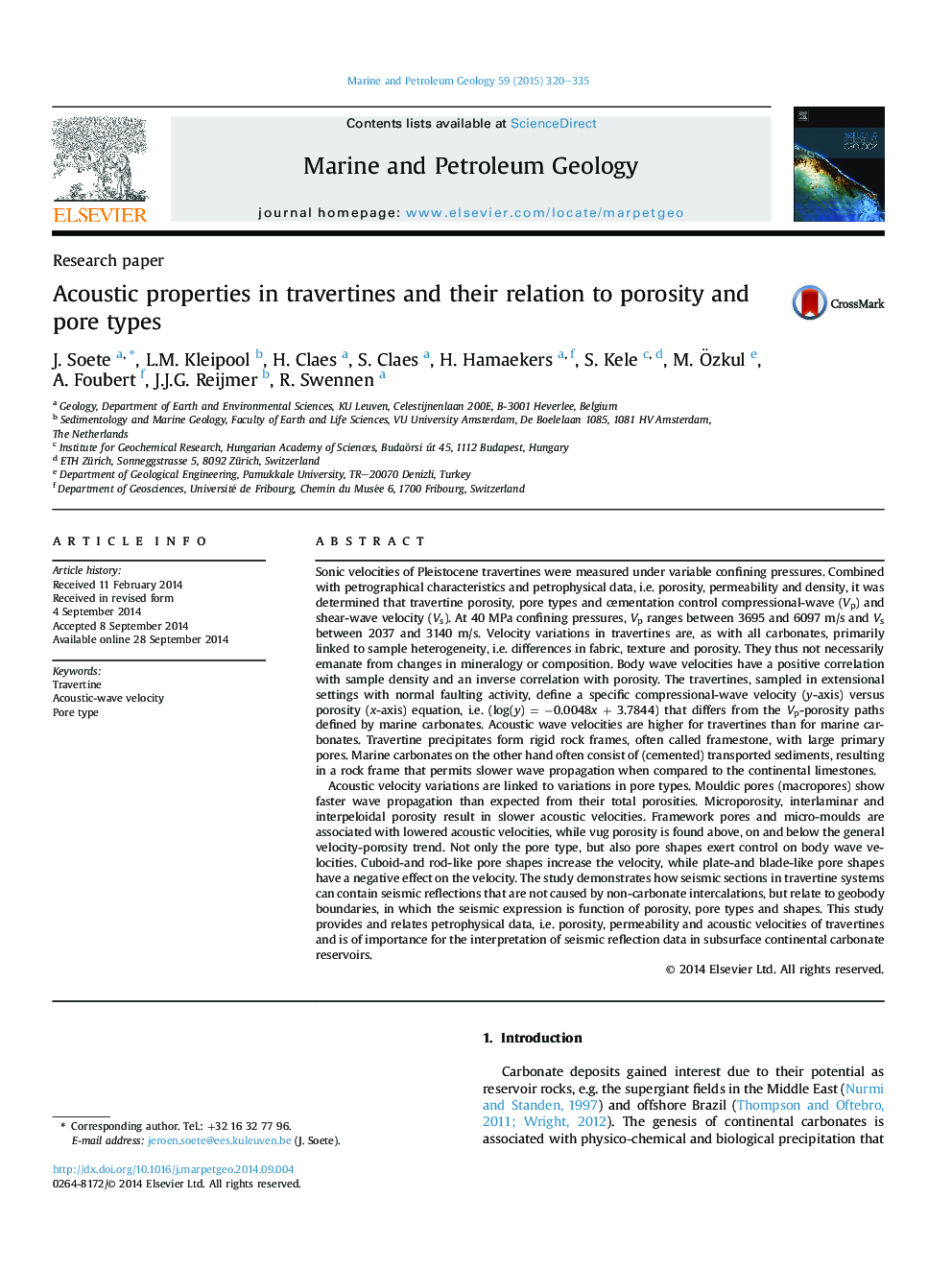| Article ID | Journal | Published Year | Pages | File Type |
|---|---|---|---|---|
| 4695624 | Marine and Petroleum Geology | 2015 | 16 Pages |
•Acoustic velocities were measured in 60 continental carbonate plugs.•Acoustic velocity is dependent on pore types, pore size and distribution.•Seismic reflectors relate to geobody boundaries.•Relations of acoustic velocity in marine and continental carbonates were examined.•Velocity decrease in continental carbonates is slower with increasing porosity.
Sonic velocities of Pleistocene travertines were measured under variable confining pressures. Combined with petrographical characteristics and petrophysical data, i.e. porosity, permeability and density, it was determined that travertine porosity, pore types and cementation control compressional-wave (Vp) and shear-wave velocity (Vs). At 40 MPa confining pressures, Vp ranges between 3695 and 6097 m/s and Vs between 2037 and 3140 m/s. Velocity variations in travertines are, as with all carbonates, primarily linked to sample heterogeneity, i.e. differences in fabric, texture and porosity. They thus not necessarily emanate from changes in mineralogy or composition. Body wave velocities have a positive correlation with sample density and an inverse correlation with porosity. The travertines, sampled in extensional settings with normal faulting activity, define a specific compressional-wave velocity (y-axis) versus porosity (x-axis) equation, i.e. (log(y) = −0.0048x + 3.7844) that differs from the Vp-porosity paths defined by marine carbonates. Acoustic wave velocities are higher for travertines than for marine carbonates. Travertine precipitates form rigid rock frames, often called framestone, with large primary pores. Marine carbonates on the other hand often consist of (cemented) transported sediments, resulting in a rock frame that permits slower wave propagation when compared to the continental limestones.Acoustic velocity variations are linked to variations in pore types. Mouldic pores (macropores) show faster wave propagation than expected from their total porosities. Microporosity, interlaminar and interpeloidal porosity result in slower acoustic velocities. Framework pores and micro-moulds are associated with lowered acoustic velocities, while vug porosity is found above, on and below the general velocity-porosity trend. Not only the pore type, but also pore shapes exert control on body wave velocities. Cuboid-and rod-like pore shapes increase the velocity, while plate-and blade-like pore shapes have a negative effect on the velocity. The study demonstrates how seismic sections in travertine systems can contain seismic reflections that are not caused by non-carbonate intercalations, but relate to geobody boundaries, in which the seismic expression is function of porosity, pore types and shapes. This study provides and relates petrophysical data, i.e. porosity, permeability and acoustic velocities of travertines and is of importance for the interpretation of seismic reflection data in subsurface continental carbonate reservoirs.
